Stone and stucco have a long history in the art and cultures that became the Islamic world. Even as far back as the Bronze Age, stone was used to create almost reverential objects of sacred animals, demons and gods/goddesses.
Stone and stucco remained the chosen media for an important and characteristic Islamic architectural element: carved and pierced window screening panels which allowed ventilation while providing privacy and shade to the interior. From early Islamic times these were executed in both materials and were employed in religious and secular buildings. Stucco techniques were highly developed and widely used to embellish interiors as well as these window grilles.
Islamic masons inherited a tradition of carving stone for decorating the exteriors and interiors of buildings from the ancient world, and the palaces of the first Islamic dynasty, the Umayyad Caliphs, were enhanced by richly carved vegetal and abstract motifs. Arabic calligraphy soon became one of the most important elements of architectural decoration. Beautiful examples of calligraphy on tombstones provide us with important fixed chronologies for the development of a variety of calligraphic styles.
In the Mughal era stone predominated, and many large and beautiful screens were produced. White marble panels inlaid with semi-precious stones and other coloured materials were also created during in India during that period.
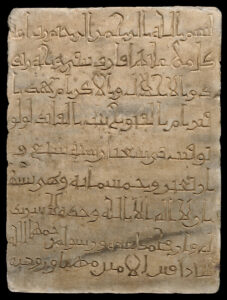
Marble tombstone of Umm al-Futuh bint al-Qa’id Lu’lu’, dated Sha‘ban 547 AH/1152 AD
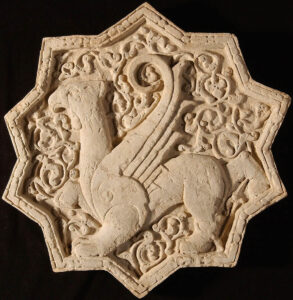
Two stucco ten-pointed star tiles with animal motifs (leogryph, elephant with rabbit)

Rock crystal chess pieces from two sets, relief-carved with palmettes and half-palmettes

Rock crystal bottle, relief-carved on both faces with a stylised ‘tree of life’ bearing half palmettes
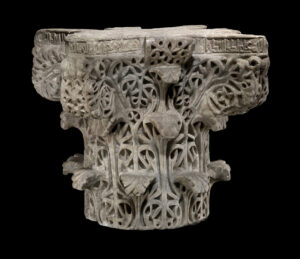
Marble capital with Kufic inscription naming the mason and patron Caliph ‘Abd Allah al-Hakam al-Mustansir bi-’llah
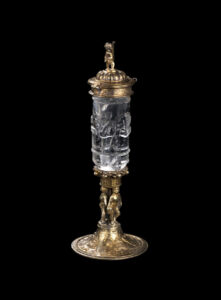
Rock crystal bottle, relief-carved with good wishes in Kufic script, later fitted with 16th-century Spanish gilded silver mounts
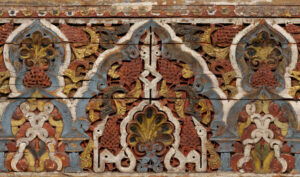
Objects of ivory and wood comprise decorative architectural items such as beams and doors, and smaller items such as boxes, jewellery and gaming pieces. Relatively few examples have survived due to the perishability of the materials.
That said, an ivory

The al-Sabah Collection is rich in manuscripts of the Qur’an. These range from a double page folio from one of the earliest known manuscripts, copied in the second century of Islam in a distinctive vertical script known as Hijazi, to
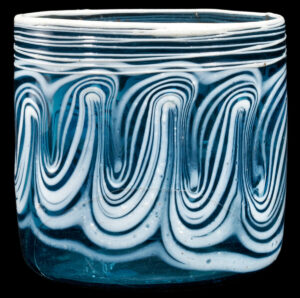
Glass objects in the collection date back almost 4,500 years and include objects from virtually every period since. The depth of the glass objects in The al-Sabah Collection allows both scholars and visitors to study, understand and appreciate the evolution